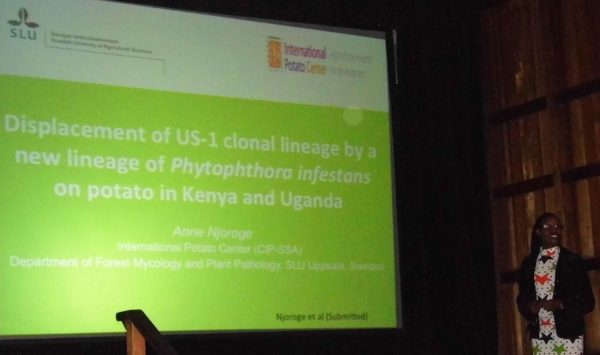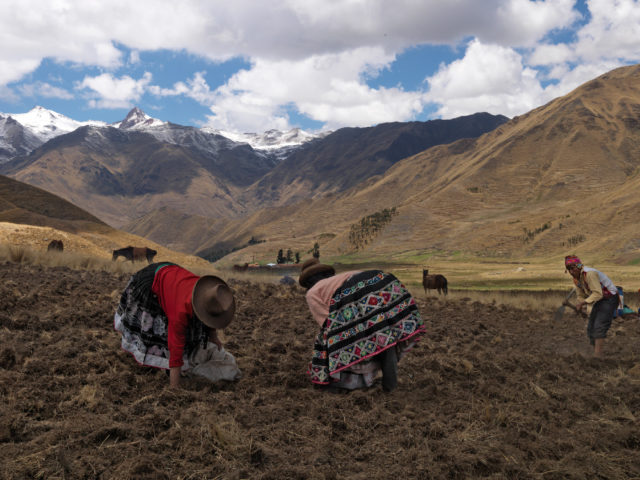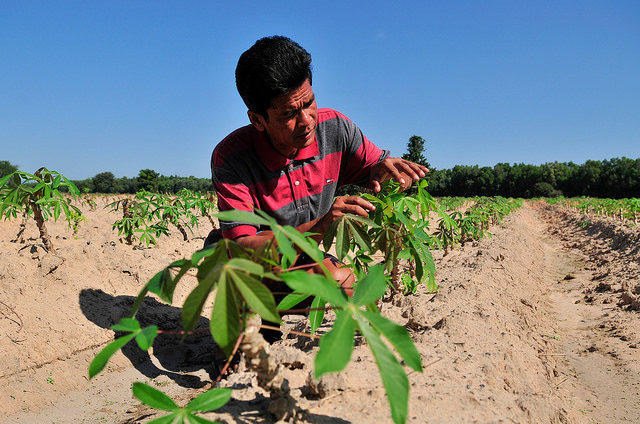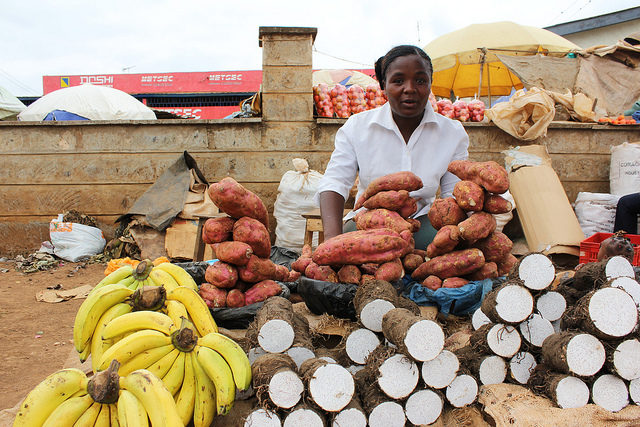In 2012 young researcher Anne Njoroge started her work with the population structure of Phytophthora infestans in East African countries. Phytophthora infestans is the highly destructive pathogen that causes late blight in potato, and Anne discovered that the formerly identified US-1 strain or “lineage” of the pathogen had been completely displaced by a new strain in Kenya and eastern Uganda, called the KE-1 lineage, and it was posing a disturbing new threat.
Research on the population biology of P. infestans is currently ongoing under the CGIAR Research Program on Roots, Tubers and bananas (RTB), with funding from the USAID project “Development of late blight-resistant potato biotech varieties.” Now the latest development is a joint project being carried out by the International Potato Center (CIP) and North Carolina State University: “Novel disease diagnostics and an early warning system for Phytophthora infestans for smallholder farmers in East Africa.” The project seeks to study P. infestans population dynamics in Uganda and Kenya, and to develop a Loop-mediated isothermal amplification (LAMP) assay that is specific for the pathogen. The idea is for the project to eventually lead to an improvement in the management of potato late blight throughout Sub-Saharan Africa (SSA).
Anne recently visited the USA, where her first activity was to take part in the “Oomycete Molecular Genetics Network” annual meeting (from March 14-17, 2015, in Monterey, California), to present the late blight research findings in East Africa. Following this, she spent time in the lab of Dr. Jean Ristaino in North Carolina State University to do further research into the Ugandan population structure. Currently, three genotypes (two on potato and one on tomato) of P. infestans co-exist in western Uganda. This region of Uganda is of particular interest, because a confined field trial (CFT) looking at the durability of a transgenic potato with a three-gene cassette against P. infestans is about to kick off in Kabale this season. Interestingly, genotypic and phenotypic analyses conducted on the pathogen reveal a very dynamic population there. A subset of the isolates from the December 2014 collection was screened using the 12-plex PCR analyses, and preliminary results indicated the presence of KE-1 in southwest Uganda. This was surprising, since analyses from the same area of isolates collected in May 2014 had not revealed any KE-1 lineage; however, these results do bear out the hypothesis that a very rapid displacement is taking place in Uganda. Moreover, phenotypic results indicate that there could be a KE-1 genotype with three levels of fungicide- (Mefenoxam) resistance that might be an indicator for fitness and increased difficulty in managing this new clonal lineage.
Together with NC State University, Anne and colleagues are tracing seed sources as a mechanism whereby P. Infestans has been spreading in the East African countries. Their next step will be to deploy the LAMP bioassay on a Lab-on-Mobile-Device (LMD) platform on smartphones developed by Mobile Assay Inc. Once the LMD platform is working, they hope to train smallholder farmers to use the LMD device and provide a virtual extension agent via smartphones preloaded with the “AFRIBLIGHT APP” linked to late blight management strategies. Finally, the data collected will be crowdsourced into a cloud-computing database and then used to map outbreaks in a disease bio-surveillance and early warning system for late blight in East Africa called AFRIblight.




